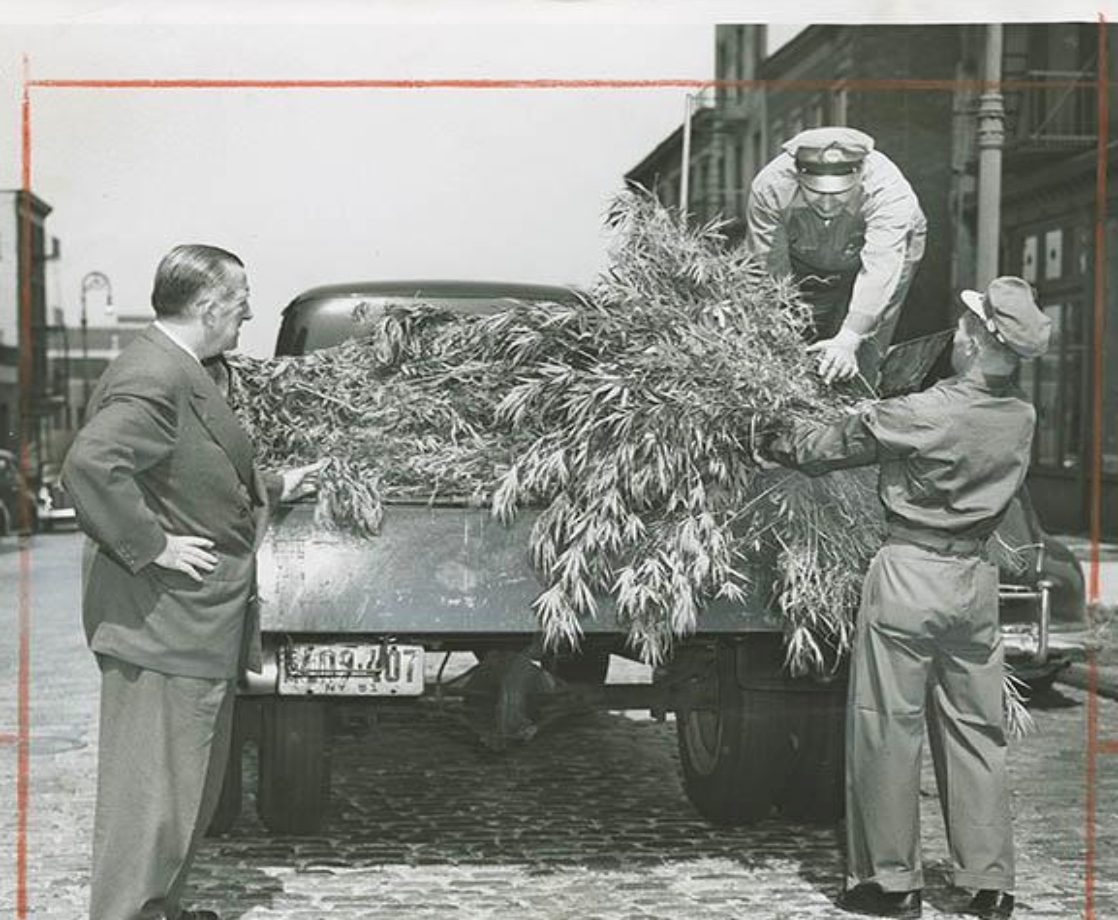Image via
The same week President Biden announced wide-sweeping pardons for simple cannabis possession, another US governmental entity is reconsidering its relationship with the racially-motivated War on Drugs: The DEA. And the Agency is officially admitting that its founding was based on prejudice in a clip released on Monday.
This video is part of a series hosted on the DEA’s YouTube channel that uses artifacts from the Arlington, Virginia, DEA Museum to illustrate chapters from the Agency’s long history of wasting taxpayer money on a quixotic fight against “drugs.” In the clip, a DEA historian named “Kasey” says the 1919 National Prohibition Act (aka the Volstead Act) changed the view of addiction. “[It] increased non-medical use, as well as racial, ethnic, and class prejudice [which] affected public opinion. What had been a medical condition became deviant, criminal. This shift led to a wave of laws against heroin, marijuana, and cocaine. In 1930, Congress authorized a new federal drug law enforcement agency… the agency is a predecessor of DEA.”
The DEA’s admission that bigotry played a formative role in the establishment of federal drug agencies is a big step towards taking accountability for the catastrophic effects prohibitionist policing has had on communities of color and other minorities in the US. All the same, the wording here seems to blame this “shift” on “public opinion” in addition to federal legislation, which is a bit disingenuous given the strident efforts put forth by US officials to push racist and prohibitionist policy forward to control Chinese, Black, and Mexican populations, among others.
But it’s a step forward?
In Marijuana Moment’s report on the video, journalist Kyle Jaeger points out that the DEA has shown signs of lessening its approach towards previously stigmatized and heavily controlled psychoactive substances. The agency expanded the amount of cannabis that can be legally grown for research purposes and backed down on various recently-announced plans to control certain psychedelic compounds that scientists say have medicinal benefits.
If you are interested in seeing more of these three- to five-minute historical deep dives hosted by Kasey and Emma (a museum technician), you might want to check out this clip. It focuses on the platform shoes worn by an undercover DEA agent in order to pretend to be groovy while busting people. Kasey says the soaring black loafers “symbolize the creativity and dedication of DEA’s agents and employees, as well as the impact that communities have on agents’ perspectives throughout their careers.”
“Americans from all backgrounds wore shoes like these, especially in diverse and densely-populated cities,” says Kasey, before switching to Doug Wankel, an agent whose job was busting people involved with PCP in 1970’s Detroit. Wankel credits the work for helping him, “burst out from some of my shyness.” “It sort of allowed you to act out your fantasies,” dude says.
Yikes. But hey, the more you know!











